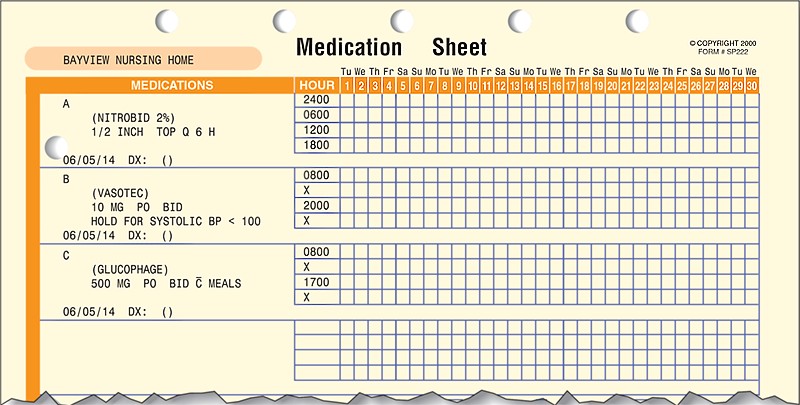The nurse assesses a client post–cataract surgery and finds white, dry, crusty drainage on the client's eyelid and lashes. What does the nurse do next?
a. Obtain a specimen of the drainage for culture.
b. Clean away the drainage and apply the prescribed drops.
c. Contact the physician for an antibiotic or-der.
d. Arrange for the client to be seen by the ophthalmologist today.
B
White, dry, crusty drainage on the eyelid and lashes is expected after cataract surgery. Because the drainage is white and no other symptoms of infection are noted, a culture does not need to be done and an antibiotic will not be needed. Urgency is not an issue because this is an expected effect from the trauma of surgery. The physician does not need to be called.
You might also like to view...
The nurse is assessing a four-year old child with suspected fetal alcohol syndrome. What assessment findings will the nurse anticipate? Select all that apply.
A) Deficiency in height and weight B) Excessive forgetfulness C) Thin upper lip D) Hearing problems E) Stereotyped behavioral patterns
A patient denies hunger despite ingesting fewer than 400 calories daily. The patient's problem might be associated with dysfunction of which structure?
a. Parietal lobe b. Hypothalamus c. Medulla oblongata d. Reticular activating system
The nurse is assessing a patient diagnosed with hyperphosphatemia. In which of the following medical conditions is this electrolyte imbalance most likely to be seen?
1. chronic renal failure 2. rheumatoid arthritis 3. heart failure 4. chronic obstructive pulmonary disease
The medication to be applied at 1700 is ________. 
Fill in the blank(s) with the appropriate word(s).